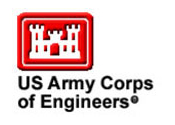
Army Corps accepting comments for Aquatic Nuisance Species Controls Paper, released today – U.S. Army Corps of Engineer
FOR IMMEDIATE RELEASE
December 21, 2011
Contact: Sarah Gross 312-846-5334
Sarah.d.gross@usace.army.mil
CHICAGO - The U.S. Army Corps of Engineers (USACE) today released for public comment the "Inventory of Available Controls for Aquatic Nuisance Species of Concern – Chicago Area Waterway System," an Interim Product of the Great Lakes and Mississippi River Interbasin Study (GLMRIS).
This ANS Control Paper identifies available options or technologies (ANS Controls) that may be effective at preventing the transfer of the 39 ANS of Concern, which were identified in the ANS White Paper released in July, from transferring through the aquatic pathways in the CAWS, as well as other potential aquatic pathways.

Light attenuating dyes, one category of the 27 ANS Control Categories, are concentrated synthetic colorants that can be applied to water for the purpose of reducing the growth of submersed aquatic plants and algae. The dyes act to reduce light penetration into the water column, inhibiting the ability to capture the necessary light needed for photosynthesis. Photo by U.S. Army Corps of Engineers.
"It is important to note that the ANS Control Paper is intended to be an inventory of ANS Controls that are available. It does not contain specific recommendations, rank the effectiveness of the ANS Controls, or identify constraints, regulatory requirements or technological feasibility of application." said Gary O'Keefe, GLMRIS program manager. "Gathering the list of potential Controls is just the first step. As we move through the planning process, we will put these potential Controls through a thorough screening process."
Using the information contained in the paper, USACE will develop screening criteria consistent with study objectives and refine the list of ANS Controls to determine which warrant further consideration. USACE will formulate plans comprised of one or more of the screened ANS Controls in consideration of four criteria: completeness, effectiveness, efficiency and acceptability. USACE will then evaluate and compare the effects of the alternative plans.
To ensure the list of potential Controls is as complete as possible, USACE is asking interested members of the public to review the list contained in the paper and provide information regarding ANS Controls that may be effective but not included in the paper or comments regarding ANS Controls listed in the paper. Comments will be accepted from Dec. 21, 2011, through Feb. 17, 2012 and may be submitted electronically through the GLMRIS website at www.glmris.anl.gov or mailed to GLMRIS ANS Control Comments, 111 N. Canal, Suite 600, Chicago, IL 60606. Comments must be postmarked by Feb. 17, 2012.
"Public participation in the GLMRIS process is essential to ensuring an effective, long-term solution that works for Great Lakes communities," said John Goss, Asian carp director, White House Council on Environmental Quality. "In tandem with GLMRIS, the Asian Carp Regional Coordinating Committee is overseeing an aggressive, coordinated strategy to keep Asian carp out of the Great Lakes."
The paper will be posted, along with ANS Control Fact Sheets, on the new ANS Controls Page on the GLMRIS website at www.glmris.anl.gov.
USACE will host teleconferences for interested members of the public to ask questions about the paper Jan. 10, 2012, from 2 – 4 p.m. (CST) and Feb. 8, 2012, from 10 a.m. – noon (CST). Call-in information for both calls is: USA Toll-Free: 877-336-1839, Access Code: 8506361, Security Code: 0000.
USACE will review and incorporate public input before finalizing and re-issuing the paper in spring 2012.
The purpose of GLMRIS is to determine the range of options and technologies available to prevent ANS transfer via aquatic pathways between the Great Lakes and Mississippi River basins. The study will inventory current conditions, as well as forecast future conditions within the study area; identify aquatic pathways that may exist between the Great Lakes and Mississippi River Basins; analyze possible ANS Controls to prevent ANS transfer to include hydrologic separation of the basins; identify the impacts alternative plans may have on resources within the study area, including both the natural and human environment, under existing and forecasted conditions; and identify a preferred plan to prevent ANS transfer between the basins. If necessary, the plan will identify mitigation measures for impacted waterway uses and significant natural resources.
